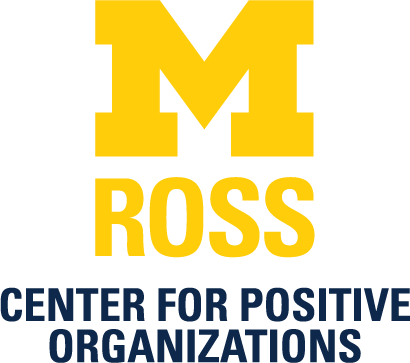If employees are feeling overworked and stressed and anxious, what is the solution?
Many discussions about burnout inevitably turn to ideas like mindfulness and Self-compassion: skills that can be taught to workers to improve their Mental health and—particularly in health care—enhance patient care.
But that puts the burden on the employee. What about the responsibility of the organization? While we ask people to be compassionate with themselves, we must also encourage organizations to be compassionate toward their people.
X

This was the starting point for a conversation hosted by the University of Michigan’s Center for Positive Organizations between their faculty director, Monica Worline, and Ace Simpson, director of the Center for Compassion Studies in New York and visiting professor of management at Manhattan University. They discussed how to cultivate a culture and practice of organizational compassion—and addressed some of the common concerns leaders may have about it.
Here is an edited and shortened version of their Q&A.
Monica Worline: Could you tell us what you mean by compassion, and why you emphasize that it’s a relational process?

Ace V. Simpson, Ph.D.
Ace V. Simpson: When we talk about organizational compassion, our emphasis is on the other. We define compassion within organizations as noticing, empathizing with, appraising, and responding to members’ suffering.
Even so, that definition has limitations, as it reflects the giver’s perspective—the one who notices, empathizes, appraises, and responds. But where is the person receiving the compassion in that definition?
In our book Organizational Compassion: A Relational Approach, we have sought to address that by broadening perspectives. We ask questions about the role of the receiver in the compassion process—and give them a voice. We seek to understand how it’s their signaling for support that actually triggers the compassion process. It’s their emoting—their fears and concerns and angst—that needs to be empathized with. It’s their narrating or explaining the context of their struggles that enables appraisal. And it’s the person who struggles, who’s challenged, who’s suffering—by describing what they need to address their concerns—who facilitates adequate responding.
Organizational compassion, then, is a co-created process between receivers and givers—one that unfolds through signaling and noticing, emoting and empathizing, narrating and appraising, describing needs and responding with support to address suffering in the workplace.
MW: What does the research tell us about why we should care about organizational compassion?
AS: Our research shows that when compassion is supported in the workplace—when people are able to express care and support for one another, or receive it from their supervisors or mentors, when they see it demonstrated by their leaders—they feel a greater sense of loyalty, commitment, and trust. When they feel cared for, and when they see that the organization cares, they’re more inspired to give their discretionary time and energy to their colleagues and to the organization.
When organizations pay attention to their people—and support them with compassion, particularly during their times of struggle or distress—that compassion tends to come back to the organization in the form of goodwill, loyalty, and engagement. It also leads to better customer outcomes, because when employees care about the organization, that care spills over into how they treat customers or patients.
That would be a kind of utilitarian argument—a business case—for why compassion matters in organizations. But beyond that, it’s also simply the right thing to do—an expression of virtue and a recognition of human dignity.
MW: You talk a lot about how leaders use their role—and the power they have—to foster greater compassion. What are some specific things you see leaders doing to facilitate compassion across an organization?
AS: Leaders do play a pivotal role in fostering compassion within their organizations—first and foremost, by simply giving permission to others to be compassionate. We say that suffering is always in the room, but we could also say there’s always compassion there, as well. In any social dynamic, there will be micro-acts of kindness, and organizations are no different. Day to day, people cover for each other, they provide slack for one another, they support one another in different ways—emotionally, but also practically, as well. And this facilitates day-to-day organizational functioning, although it’s not necessarily taught in business schools or acknowledged in management and organizational theory. We might even say that organizations couldn’t function without those micro-practices of care and compassion.
Leaders can highlight that. They can acknowledge it, recognize it, encourage it, and facilitate it. They can demonstrate that this is really important and matters within their organization.
A great example of a leader who emphasized compassion within his organization was Jeff Weiner, the former CEO of LinkedIn. He would talk about managing compassionately. He would talk about how he applied this in his own leadership by pausing before reacting, understanding others’ hopes and fears, and trying to foster their well-being and success. So that’s the first thing that a leader can do: They can role-model compassion for other leaders within their organizations.
They can take that further by seeking to foster it within organizational processes. Weiner taught workshops on managing compassionately and organized programs for employees across the organization. They organized compassionate leadership summits and more broadly sought to integrate it into other organizational processes. If compassion doesn’t have the support of leadership, it will be there, but it will be underground, so to speak. When it is supported by leadership, then it can really flourish and thrive.
“If compassion doesn’t have the support of leadership, it will be there, but it will be underground. When it is supported by leadership, then it can really flourish and thrive.”
―Ace V. Simpson, Ph.D.
MW: For people who aren’t in positions of leadership or executive influence, what can they do to create a more compassionate organization without having the support of leadership?
AS: What comes to mind are Peter Frost’s “toxin handlers.” That’s where a compassionate leader or supervisor lower down the organizational hierarchy becomes a defender of their team or people, defending them against unreasonable deadlines and demands that come from headquarters that can undermine their well-being and psychological safety and security. That would be an extreme case, because Frost’s toxin handlers often take a personal hit. It undermines their own physical health and well-being as they shield their people from toxicity that comes from higher up in the organization.
Compassion can involve resistance to oppression and abuse. That would be an example of compassion as strength—and it takes a lot of courage to be that kind of leader, supporting your people in that way. If you are going to take that role—you need to be able to deal with that internally yourself, and to have an outlet: peers that you can speak with, coaches who can support you. It’s a process of Self-awareness, not just being the angry compassion warrior. It’s about turning that toxicity—that poison—into nectar.
Aside from that, the manager or team leader lower down in the organization can view their division as a micro-organization within the larger system. Compassionate processes can be integrated within a division just as much as across the whole organization. I’ve certainly seen that in health care organizations and other sectors. When we look at data from our surveys, we often find divisions where employees rate their team very highly in terms of compassion—and others where that’s not the case—all within the same organization. The fact that you find such disparities within the same system indicates that it’s possible for a leader to create a microculture within their team division.
MW: What are some organizational features that get in the way and inhibit compassion across the system, or that enable it?
AS: Culture is really important. Culture can normalize compassion—or not. And when it does, it can create an environment where people feel safer to address mistakes and concerns, to communicate with one another, to be vulnerable, and to reach out and support one another.
Another key factor is leadership. Leadership plays a critical role—not only in role-modeling, but also in ensuring that compassion is integrated across the organization.
Then there are the routines, daily rituals, check-ins, and processes of the organization: Who does it hire? What does it value in terms of performance? Is it purely a metric of productivity? Or is there also a relational dimension to how performance is evaluated? You might have a top sales agent who hits their targets by trampling on colleagues.
Communication is also important—having open communication, empathic channels, and opportunities for people to voice concerns and be heard without fear of reprisal.
And then, related to culture, are mission and values. A lot of the time, organizations profess a certain mission or set of values. But then there’s a disconnect between the espoused values and the actual practices. Being aligned there is also of vital importance.
MW: In a moment like this, where cost-cutting is at the forefront of the organizational agenda, does compassion have a place?
AS: Absolutely. Cost-cutting may be required for an organization’s survival, and a leader has to make those tough choices because they need to think about the organization as a whole. The leader is responsible for all the employees and all those who are stakeholders within that organization.
But cost-cutting can be done in a manner that lacks compassion, or it can be done with a lot of empathy and a lot of care, where the leader speaks to employees and explains why those decisions are made and explains the different choices that were available. It involves being held accountable for the decisions made.
Sometimes leaders try to lead through spreadsheets, and they just say the data said we had to do it. But there are always choices. And there are great examples of organizations—like Costco or Southwest or Hilton—facing the question of whether to lay off employees after a global financial crisis, or after, let’s say, 9/11, when people are too afraid to fly. As an airline, what are you going to do? You have to reduce the number of routes you’re flying, which may mean laying people off. Or the organization could go to employees and say, “We need to reduce the number of routes, for now. We could lay some of you off, but what we’re going to do is ask you all to work fewer hours and take a temporary pay cut. Once things return to normal, we’ll increase your hours and restore your original pay.”
Alternatively, organizations can support employees by helping them find alternative employment, offering counseling and career guidance, or training them for work in other areas, as well.
MW: How can you ensure that a compassionate leader is not manipulated or exploited?
AS: There is that fear—that if I’m kind or compassionate, others might take that for weakness and then manipulate me and take advantage. And, yes, that possibility will always be there.
One option is to decide, “OK, I’m not going to be compassionate. I’ll just present a tough exterior, suppress my compassionate side, and say it has no role or place here.” The other option is to acknowledge that, yes, I might occasionally be taken advantage of—but I’m willing to take that risk as a leader. Sometimes a team member may take sick leave when they’re not really unwell, or someone might exploit the system in another way.
But I would hope—and expect—that as I act compassionately and supportively, we build a certain level of trust between us. And within that context of trust, loyalty, commitment, and engagement—created through a compassionate environment—the likelihood of being taken for granted or manipulated diminishes considerably.
MW: You’ve talked about “presponse” rather than waiting for suffering and responding to it. What do you mean by that?
AS: Often we talk about compassion as a response to suffering, and that framing can be problematic. There’s also suffering that we can anticipate in advance—for example, during mergers and acquisitions, or periods of organizational change. There’s also suffering that can arise within the organization in terms of bullying.
Organizations can and should anticipate this. If we broaden our thinking about compassion—not only as responding to suffering, but also anticipating it—anticipating the pain that will inevitably arise from processes that are unfolding—then being a compassionate leader means responding to that anticipated suffering, as well. That’s when we really begin to broaden our understanding of what compassion entails and involves.

This essay is based on a Q&A that is part of the Positive Links Speaker Series by the University of Michigan’s Center for Positive Organizations. The Center is dedicated to building a better world by pioneering the science of thriving organizations.













